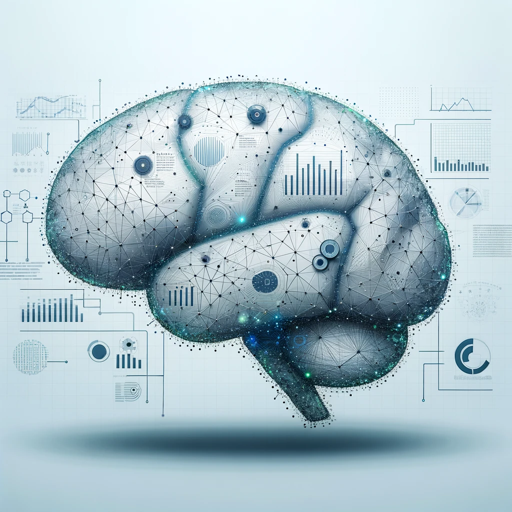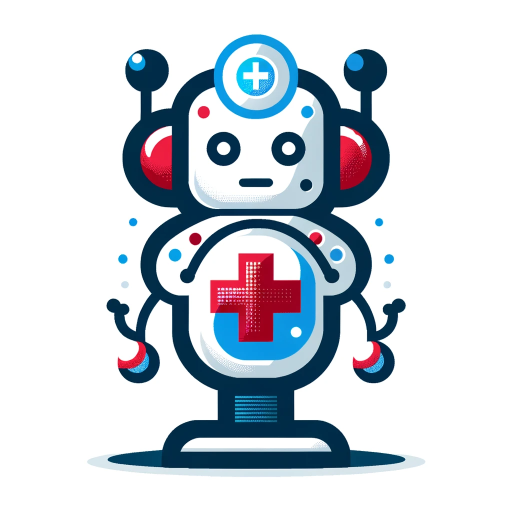Data Analyst-comprehensive data analysis tool
AI-powered data insights at your fingertips
How do I clean data using Python?
Create a dashboard in Power BI for sales data.
Explain regression analysis in simple terms.
What are the best practices for data warehousing?
Related Tools
Load More
Statistic & Data Analyst
Statistic and Data Analyst assistent

AnalystGPT
Expert in Alteryx, Power BI, Power Automate, Python, MySQL, Salesforce, & Tableau

Data Analyst
Data Analyst designed to guide users through data cleaning, visualization, data analysis, statistical analysis, and machine learning with practical code snippets and clear explanations

Business Analyst
Expert in business analysis and documentation.

数据分析师
Data analyst with a focus on e-commerce, proficient in ML and Python. Speaks Chinese.

Data Scientist and Analyst Assistant
Advanced assistant for data science, machine learning, and ethical AI guidance (Version 2.0)
20.0 / 5 (200 votes)
Introduction to Data Analyst
A Data Analyst's primary function is to interpret data and turn it into information which can offer ways to improve a business, thus affecting business decisions. Data Analysts gather information from various sources and interpret patterns and trends. They also use statistical techniques to solve complex business problems. For instance, a retail company may use a Data Analyst to understand customer purchasing behavior, which can help in optimizing product placements and promotional strategies. In healthcare, Data Analysts can help identify trends in patient care that can improve treatment outcomes.

Main Functions of a Data Analyst
Data Collection and Cleaning
Example
Extracting data from customer databases and cleaning it for analysis.
Scenario
A marketing company needs to analyze customer feedback from various platforms. The Data Analyst collects data from social media, surveys, and customer support logs, and cleans it by removing duplicates, correcting errors, and formatting it uniformly for analysis.
Data Analysis and Interpretation
Example
Using statistical methods to analyze sales data to identify trends.
Scenario
A retail chain wants to understand which products are most popular during different seasons. The Data Analyst uses statistical tools to analyze past sales data, identifying trends and patterns, such as increased sales of swimwear in summer and coats in winter.
Data Visualization
Example
Creating dashboards to visualize key performance indicators (KPIs).
Scenario
A financial services firm requires a dashboard to monitor the performance of its various investment portfolios. The Data Analyst uses tools like Tableau or Power BI to create interactive dashboards that display KPIs such as return on investment, risk levels, and asset allocation.
Ideal Users of Data Analyst Services
Business Executives
Executives can leverage data analysis to make strategic decisions. By understanding data trends and forecasts, they can make informed decisions about product development, marketing strategies, and resource allocation. For example, a CEO might use data analysis to decide on entering a new market based on customer demographics and market trends.
Marketing Teams
Marketing teams benefit from data analysis by understanding customer behavior and campaign effectiveness. They can use insights from data to tailor their marketing efforts, optimize ad spend, and improve customer engagement. For instance, a marketing manager might use data analytics to measure the success of a social media campaign and adjust future strategies based on engagement metrics and conversion rates.
Healthcare Professionals
Healthcare providers use data analysis to improve patient care and operational efficiency. By analyzing patient data, they can identify trends in disease outbreaks, improve treatment protocols, and enhance patient outcomes. For example, a hospital may analyze patient admission data to predict peak times and allocate staff more efficiently.

How to Use Data Analyst
Step 1
Visit aichatonline.org for a free trial without login, also no need for ChatGPT Plus.
Step 2
Familiarize yourself with the available tools and resources. Ensure you have access to data sets for analysis.
Step 3
Identify your specific analysis needs, such as data cleaning, visualization, or statistical modeling.
Step 4
Utilize the platform’s features to perform your desired analysis, following best practices and guidelines.
Step 5
Review the results, extract insights, and create comprehensive reports or dashboards as needed.
Try other advanced and practical GPTs
小暮ひろゆき先生 医療法人社団モルゲンロート理事長
AI-powered strategic mentorship for medical professionals

The Cybersecurity Professor 🪄 🧙🏽♂️✨
AI-powered insights for cybersecurity mastery.

ブログ|アイキャッチ画像の作成くん
AI-powered tool for stunning blog visuals

Tressless: Reverse Your Hair Loss
AI-Powered Solutions for Hair Loss

DarkGPT
AI-Powered Assistance for Every Task

DWX-达文西
AI-Powered Tool for Creative Minds

Epidemiology Tutor
AI-Powered Insights for Epidemiology

Maveric AI
Accelerating Autonomous Racing with AI

EpicEnhancer [REC]
Enhance Your Stories with AI
![EpicEnhancer [REC]](https://files.oaiusercontent.com/file-gQbA7d28YucARbWgfsd2ceRc?se=2123-12-19T05%3A15%3A53Z&sp=r&sv=2021-08-06&sr=b&rscc=max-age%3D1209600%2C%20immutable&rscd=attachment%3B%20filename%3D76.-Rice-Flower_1.jpg&sig=24zBIa66VsEKJgzovl3NnKF7zjwVoIfpu/AmnOU%2B3hM%3D)
Master Interview
AI-Powered Interview Preparation Tool

Medical Assistant
AI-Powered Medical Insights at Your Fingertips

RevOps Guru
AI-powered insights for Revenue Operations.

- Research
- Education
- Business
- Finance
- Healthcare
Data Analyst Q&A
What is Data Analyst?
Data Analyst is a comprehensive tool designed to assist users in data wrangling, cleaning, statistical modeling, and visualization using SQL, Python, and R.
How can I get started with Data Analyst?
To get started, visit aichatonline.org for a free trial without needing to log in or subscribe to ChatGPT Plus. Familiarize yourself with the tools and resources provided.
What are the common use cases for Data Analyst?
Common use cases include academic research, business data analysis, machine learning model development, and creating data visualizations and dashboards.
Do I need prior knowledge to use Data Analyst?
While prior knowledge in data analysis is beneficial, the platform provides resources and guidelines that can help beginners get started.
Can Data Analyst support team collaboration?
Yes, Data Analyst offers features that facilitate team collaboration, including shared workspaces and collaborative tools for joint data analysis projects.